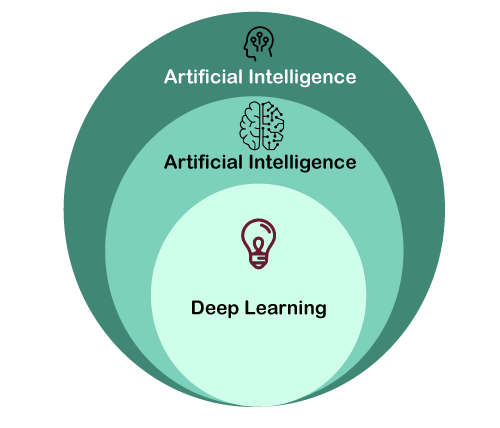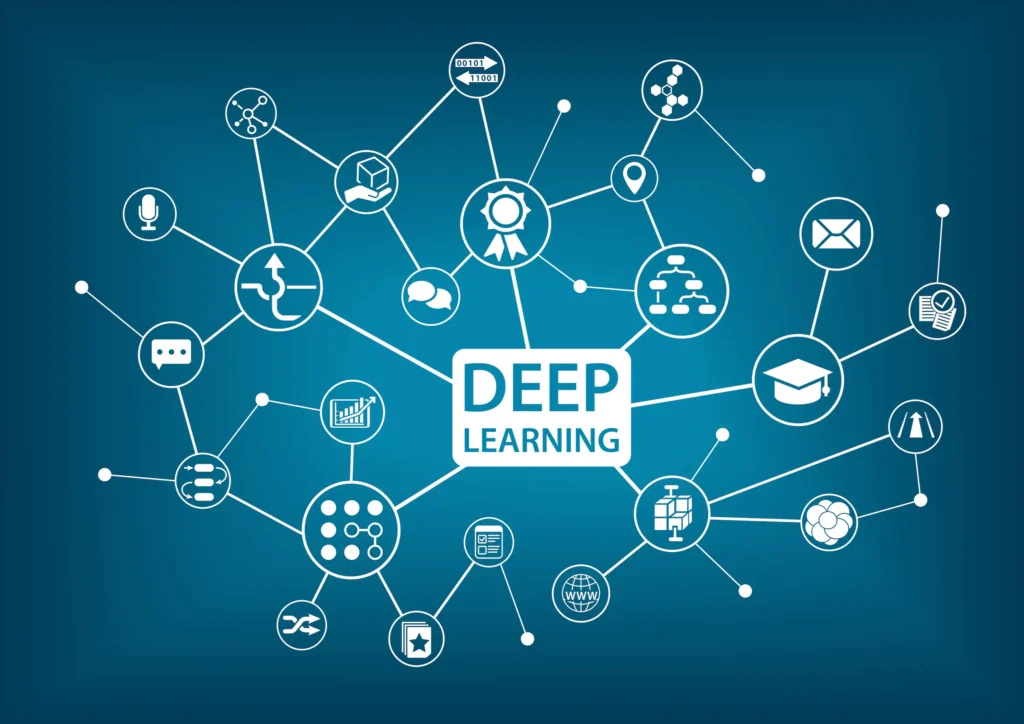Table of Contents

Introduction
- Two of those technologies are machine learning (ML) and deep learning (DL) which occupy significant positions in the advanced world. Despite the fact that such terms are used quite frequently as synonyms, they denote two different concepts in the sphere of artificial intelligence (AI).
- This blog reviews the distinction between the two, to an understanding of what makes each different, and within what context each is best deployed.
What is Machine Learning?
- Machine learning is one of the categories or branches of AI, which is concerned with the development of models that are able to learn and make decisions from the data provided.
Key Characteristics
- Learning from Data: The given data increases the exposure of ML models and, therefore, their performance.
- Feature Extraction: It needs user’s input to choose features that could be processed in order to draw useful information.
- Algorithm Types:
- Supervised Learning: For training it normally utilizes what is referred to as labeled data (for example email spam filters).
- Unsupervised Learning: Uses information which is not categorized in any way and is used to uncover trends (e. g. , in market segmentation).
- Reinforcement Learning: Basically knows through acting on an environment for the purpose of gaining the largest amount of rewards (for example, game AI).
- Common Applications:
- Predictive analytics in finance.
- Image and speech recognition.
- Customer recommendation systems.
What is Deep Learning?

- ML happens to be one of the most crucial components of AI, deep learning is a technique of learning, which uses neural networks, containing multi-layer, for analyzing data at different levels ranging from symbolic to atomic.
Key Characteristics:
- Neural Networks: Learn from the human brain and its structure to assimilate the data.
- Automated Feature Extraction: The characteristics that will be used will therefore be derived from the raw data.
- Types of Neural Networks:
- Convolutional Neural Networks (CNNs): Also best suited to image processing.
- Recurrent Neural Networks (RNNs): Most useful for ordered pairs or sequence data such as text and time analysed data.
- Common Applications:
- Autonomous driving systems.
- Voice assistants, and language translation.
- Improvement in real time image and video processing.
Machine Learning vs. Deep Learning: A Comparison
| Aspect | Machine Learning | Deep Learning |
|---|---|---|
| Complexity | Normally simpler models and structured data. | Uses multi-layer perceptron for unstructured data (e.g., images, text). |
| Data Requirements | Effective with small datasets. | Highly dependent on large datasets and significant computation time. |
| Performance | Favored for simplicity in explanation and implementation. | Performs better with large, less-structured data involving complex patterns. |
| Examples | Decision trees, kernel classifiers. | CNNs for image classification, RNNs for language modeling. |
Conclusion
- Awareness of the distinction between the two prevalent technologies of AI is crucial for proper implementation of related solutions.
- while machine learning incorporates several more basic models and models appropriate for structured data, deep learning is involved in neural networks for complex unstructured data.
- Each has their important part in AI’s development and promoting its application in numerous sectors.
FAQs :
Q1: When comparing Machine Learning and Deep Learning, what makes one stand out over the other?
Ans: Specifically, this paper delves into machine learning approach (ML) that uses algorithms that get better with time and generally involves features extracted by human beings. On the other hand, Deep learning (DL), which is a subfield of ML, uses neural networks with several layers that can self-acquire features from the data and learn from large datasets of unorganized data and is apt for image and text analysis among other services.
Q2: Machine learning requires data to build the model while deep learning requires a large amount of data to feed the pre-trained model.
Ans: The former, known as machine learning, is usually optimal for a medium number of variables with singly pre-defined and selected characteristics used for its training specie while the one that thrives on large quantities, often irregular data formats such as images or texts among others is deep learning, which is optimal for large and varied cases.
Q3: provide a description of algorithms that are used in the ML?
Ans: Machine learning employs various algorithms: supervised learning involves utilization of pre-labeled data in classification, or regression tasks; unsupervised learning involves identification of patterns in data without labels by employing techniques such as clustering or association; reinforcement learning on the other hand involves utilizing model interactivity within environments to make optimal decisions with a view of achieving maximum reward, a technique employed in games or other auto systems.
Your point of view caught my eye and was very interesting. Thanks. I have a question for you.
Thank you for your sharing. I am worried that I lack creative ideas. It is your article that makes me full of hope. Thank you. But, I have a question, can you help me?
Your article helped me a lot, is there any more related content? Thanks!
Your point of view caught my eye and was very interesting. Thanks. I have a question for you.